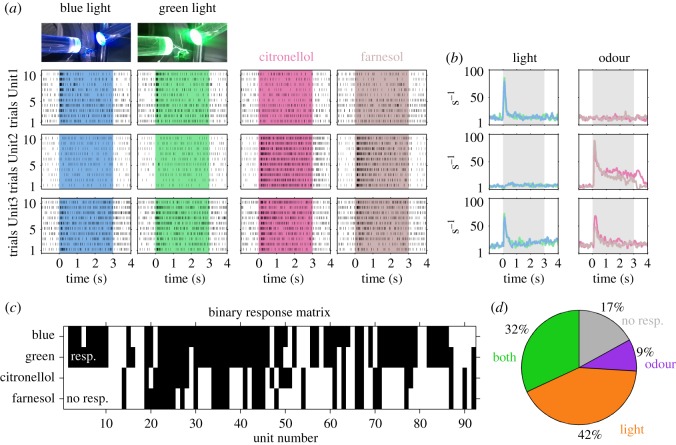Figure 2.
Single MBONs respond to either light, odour or both modalities. (a) The trial by trial resolved stimulus-dependent dot displays of three example units (rows) illustrate three different response behaviours. Unit1 (first row) responded reliably to blue light (first column) and green light (second column) in each single trial. Stimulation with citronellol (third column) and farnesol (fourth column) did not evoke responses in any trial. Unit2 (second row) behaved vice versa. Unit3 (last row) was reliably excited by both light and both odour stimuli. (b) The instantaneous firing rates of the 10 trials per stimulus were averaged for the three example units shown in (a) keeping the same odour and colour code. (c) Significant increase (black) in the averaged instantaneous firing rates (b) of each unit and type of stimulation is shown as a binary response matrix of the 92 recorded MBON-units. (d) The proportion of units responding to both modalities was 32%, to light stimulation only 42%, and 9% responded to odour stimulation only. A proportion of 17% was not sensitive to odour or light stimuli.

